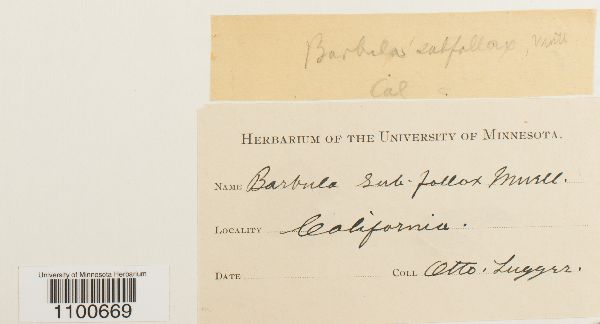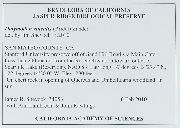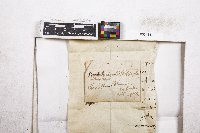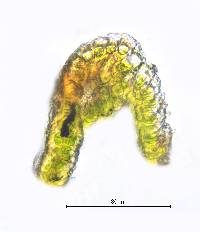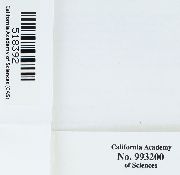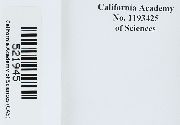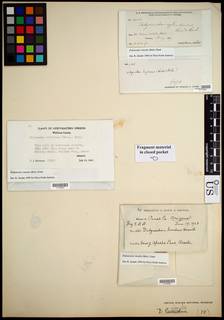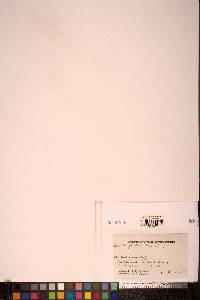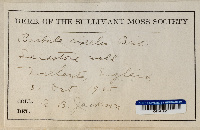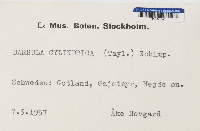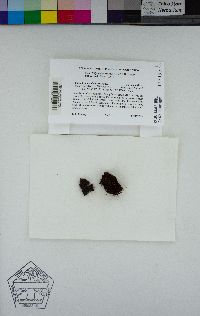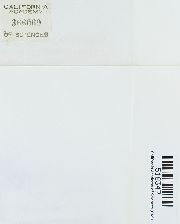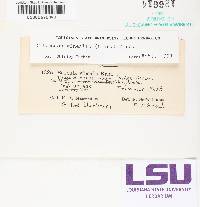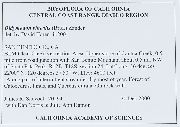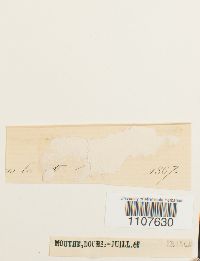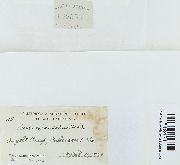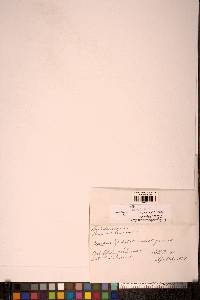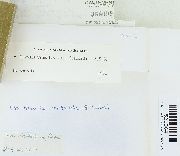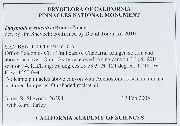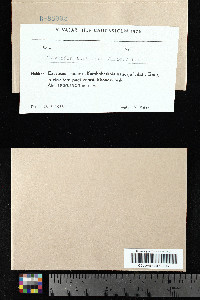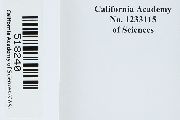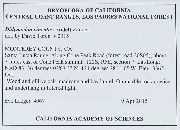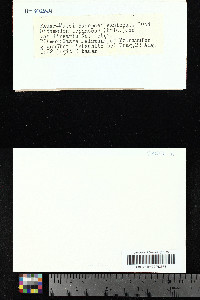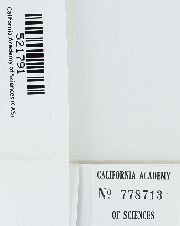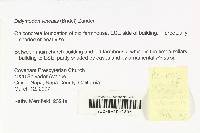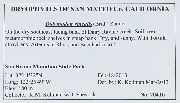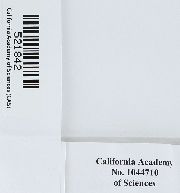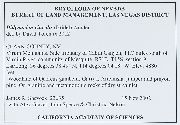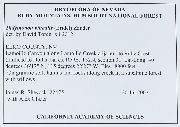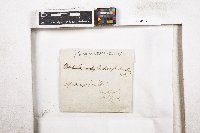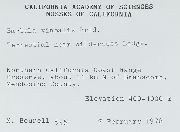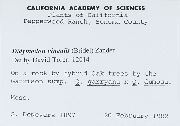
Consortium of Bryophyte Herbaria
- building a Consortium of Bryophytes and Lichens as keystones of cryptobiotic communities -
|
|
|
|
Family: Pottiaceae
didymodon moss, more...didymodon moss, didymodon moss
[Barbula altipes Müll. Hal., moreBarbula artocarpa Lesq., Barbula bakeri Cardot & Thér., Barbula bourgaeana Besch., Barbula chrysochaete Müll. Hal., Barbula circinnatula Müll. Hal. & Kindb., Barbula cylindrica (Tayl.) Schimp., Barbula cylindrica subsp. vinealis (Brid.) Dixon, Barbula cylindrica var. rivularis (Loeske) Loeske, Barbula cylindrica var. vinealis (Brid.) Lindb., Barbula dieckii Broth., Barbula elata Müll. Hal., Barbula elbertii Broth., Barbula ellipsithecia Müll. Hal., Barbula fallax var. vinealis (Brid.) Huebener, Barbula horridifolia Müll. Hal. & Kindb., Barbula lateritia Kindb., Barbula lozanoi Cardot, Barbula magnifolia Müll. Hal., Barbula melanocarpa Müll. Hal. & Kindb., Barbula nipponica Nog., Barbula pachydictyon Broth., Barbula pseudorigidula Kindb., Barbula rectifolia Taylor, Barbula rivularis Loeske, Barbula robustifolia Müll. Hal. & Kindb., Barbula rothii Herzog, Barbula rubiginosa Mitt., Barbula rubiginosa subsp. subicmadophila (Müll. Hal. & Kindb.) Broth., Barbula salazarensis Thér., Barbula schensiana Müll. Hal., Barbula semitorta Sull., Barbula subcontorta Broth., Barbula subcylindrica Broth., Barbula subfallax Müll. Hal., Barbula subgracilis C. Müll. & Kindb. in Mac. & Kindb., Barbula subicmadophila Müll. Hal. & Kindb., Barbula subtorquata Müll. Hal. & Hampe, Barbula tortellifolia Müll. Hal. & Kindb., Barbula treleasei Cardot & Thér., Barbula vinealis Brid., Barbula vinealis f. rivularis (Loeske) Podp., Barbula vinealis subsp. cylindrica (Taylor) Podp., Barbula vinealis var. cylindrica (Taylor) Boulay, Barbula vinealis var. vinealis , Barbula virescens Lesq., Barbula viridescens Stirt., Didymodon dieckii (Broth.) Kindb., Didymodon occidentalis (Mitt.) R.H. Zander, Didymodon subtorquatus (Müll. Hal. & Hampe) Catches., Didymodon vinealis var. rubiginosus (Mitt.) R.H. Zander, Didymodon vinealis var. vinealis (Brid.) Zand., Glyphomitrium cylindraceum Taylor, Pottia rubiginosa (Mitt.) S. Watson, Racomitrium cyclodictyon Cardot & Thér., Tortula elata (Müll. Hal.) Durieu & Mont., Tortula fallax var. vinealis (Brid.) De Not., Tortula rectifolia (Taylor) Mitt., Tortula subtorquata (Müll. Hal. & Hampe) Mitt., Tortula vinealis Spruce, Vinealobryum vineale (Brid.) R.H. Zander, Vinealobryum vineale var. rubiginosum (Mitt.) R.H. Zander, Weissia monocladus Brid., Zygotrichia cylindrica Taylor] |
Plants: green to dark green, usually with a reddish cast. Stems: to 2 cm, central strand present. Stem: leaves often twisted, appressed to weakly spreading or spreading-flexuose when dry, spreading to spreading-recurved and not keeled when moist, monomorphic, lanceolate, grooved adaxially along the costa, especially near leaf apex, 0.8–2.5(–4) mm, base scarcely differentiated to oblong in shape, margins recurved below mid leaf or to above mid leaf, entire, apex acute, not fragile, commonly ending in a conical cell; costa percurrent or more commonly short-excurrent, not strongly spurred, not much widened or tapering, lacking an adaxial pad of cells, adaxial costal cells quadrate to short-rectangular, ca. 4 cells wide at mid leaf, guide cells in 1(–2) layers; basal laminal cells differentiated medially or across the leaf, walls thin to weakly thickened, rectangular or seldom quadrate, not perforated; distal laminal cells 7–10 µm wide, 1:1, nearly smooth or papillae simple or 2-fid, 2–3 per lumen, lumens irregular or oval to rounded-quadrate, walls thin or evenly thickened, convex on both sides of lamina, 1-stratose or occasionally 2-stratose in patches. : Specialized asexual reproduction very rare, by multicellular gemmae in clusters in leaf axils. Seta: 0.8–1 cm. Capsule: 1.5–2.5 mm; peristome teeth 32, linear, twisted 1/2 to once, to 1300 µm, occasionally rudimentary or absent. Spores: 9–12 µm. : Distal laminal KOH reaction light to dark red-brown, occasionally deep red-orange. North America, Mexico, Central America, South America, Eurasia, n Africa, Atlantic Islands (Iceland), Pacific Islands. Varieties 2 (2 in the flora). Didymodon vinealis is often difficult to distinguish from sterile forms of D. rigidulus, but the elongate cells commonly found on the adaxial surface of the costa near the boat-shaped leaf apex, the often strongly papillose laminal cells, and the usual presence of a distinct groove down the adaxial surface of the leaf along the costa are characteristic features. Some but not all specimens may be quickly assigned to this taxon by a unique deep slit floored by elongate cells on the adaxial surface of the costal apex (the adaxial epidermis being absent), visible as a clear window abaxially. Bryoerythrophyllum recurvirostrum is immediately distinguished by the clear, enlarged proximal cells. Like Bellibarbula recurva, small forms of D. vinealis may have quadrate or very short-rectangular proximal cells and sinuose costa, but the former has thick-walled proximal cells and the costa twists laterally, not vertically in the concave distal portion of the leaf of D. vinealis, and the adaxial cells of the costa of commonly elongate, 2:1 or more. Capsule: with peristome absent; operculum narrowly conic, cells straight or nearly so. Phenology: Capsules mature spring. Moderate elevations. B.C., Colo., Idaho, Mont., Oreg., Wash. Although the gametophyte of var. rubiginosus is little variable, having short-lanceolate to triangular leaves, it is well within the range of variation of the typical variety. It has been said to differ in a very narrow distal lamina that is often fragile or notched, or by large distal laminal cells, or by quadrate proximal cells, but these characters are insufficient to distinguish sterile specimens. The sporophyte is required for accurate identification, with the absence (not mere fragility) of the peristome as the critical character, following the species concept of W. C. Steere (1938b); the nearly straight opercular cells are diagnostic. Forms of var. vinealis with weakly twisted opercular cells and weak, very fragile peristomes (e. g. California, Flowers 6561, COLO) may be taken as intermediates. B. H. Allen (1995) recently provided new American synonymy. The Mexican species Didymodon incrassatolimbatus Cardot should be looked for in the flora area; it differs by the broadly lanceolate, marginally 2-stratose leaves and well developed though short, red, erect peristome. Capsule: with peristome present, twisted, to 1300 µm; operculum broadly conic, cells twisted. Phenology: Capsules mature spring–summer. Soil, calcareous rock, granite outcrop, schist, sandstone. moderate to high elevations (600-2300 m). Alta., B.C., Nunavut, Alaska, Ariz., Calif., Colo., Idaho, Ill., Mont., Nev., N.Mex., Oreg., Utah, Wash., Wyo., Mexico, Central America, South America, Europe, Asia (Middle East, Siberia), n Africa, Atlantic Islands (Iceland), Pacific Islands. In Nunavut, var. vinealis is known from Banks Island. Some collections of var. vinealis have elongate, very fragile apices, sometimes 2-stratose. Variety flaccidus was synonymized by P. Sollman (1983), but may be distinguished if needed by the leaves long, often 2.5 mm or longer, and crisped when dry, the distal margins plane. The peristome commonly falls with the operculum in the specimens seen, and may appear to be absent, but the operculum has twisted cells and is thin-walled. The leaves of Didymodon vinealis var. vinealis may be nearly plane margined and quite fragile (Colorado: Jefferson County, Weber and Wittman B-110966, MO, COLO), with the appearance of variants of Trichostomum tenuirostre, but the distal laminal cells are distinctly reddish in KOH under high magnification (not yellow). |
Powered by Symbiota.

